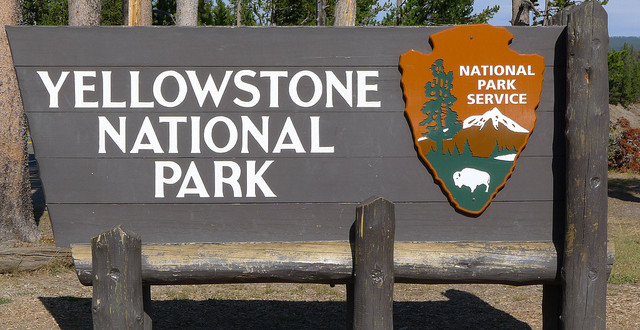Despite high snowpack this winter, one Yellowstone expert is warning the park’s climate is changing dramatically.
And these changes will have bearing not only on snowpack, but also Yellowstone’s vegetation and animal population and its fire season.
According to Yellowstone GIS Specialist Ann Rodman, speaking to KBZK Bozeman, what happens in winter has bearing on the whole park, since the snow that falls in winter eventually thaws in spring and feeds into Yellowstone’s groundwater and river system. From KBZK:
“You’ve got to differentiate between weather and climate and you hear that all the time,” said Rodman. “Weather is what’s happening this year, what this snowpack is like this year but climate is if you give something 30 years or longer and you start to see a trend or an average over that period of time. You’ve got to pay attention to that as well.”
While most of us think of Yellowstone National Park as a summer visit to a geyser and a chance to see a grizzly bear, in reality, most of what happens in Yellowstone is happening right now.
The snow falling in the mountains is building snowpack that will ultimately become the Gallatin, the Madison, the Yellowstone – all rivers with their beginnings in the park.
Just like the frozen Undine Falls, the snowpack sits and waits until the spring thaw to release its potential.
However, research that’s been going on in Yellowstone for more than 40 years is telling us the waterfall will thaw much earlier in the spring and it won’t freeze until much later next fall.
“When you look at that, the trend over time is decreasing snowpack all over the whole, in fact, the whole ecosystem,” said Rodman. “I don’t think there’s anywhere in the ecosystem where we have an increasing snowpack over time.”
Some areas of Yellowstone, Rodman adds, have seen snow melt up to 30 days sooner than the historical average.
On the bright side, Rodman notes, Yellowstone’s diverse topography and range of ecosystems present make the park hardier when it comes to such changes.
“The ecosystem is pretty resilient, I think because we have such varying topography and huge elevation differences,” Rodman told KBZK. “So we have lots of different ecosystems, micro-climates, all of that. I think that allows, as we go forward and things are changing, it allows plants and animals to adapt to these micro-systems.”
 Yellowstone Insider Your Complete Guide to America's First National Park
Yellowstone Insider Your Complete Guide to America's First National Park





